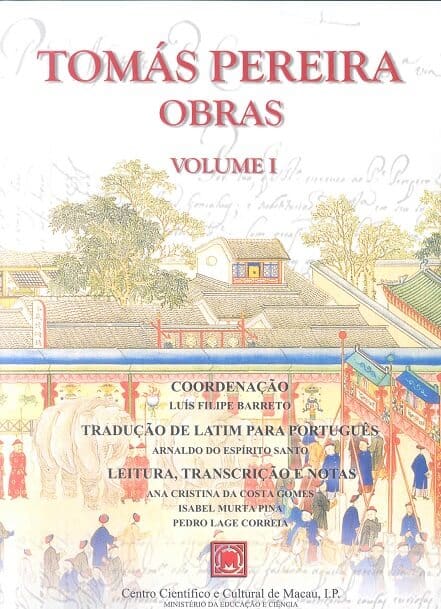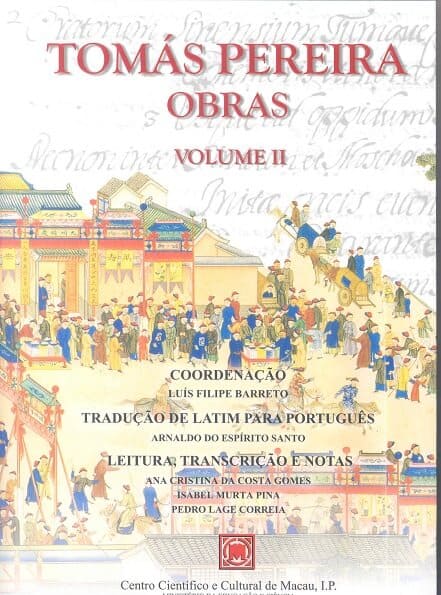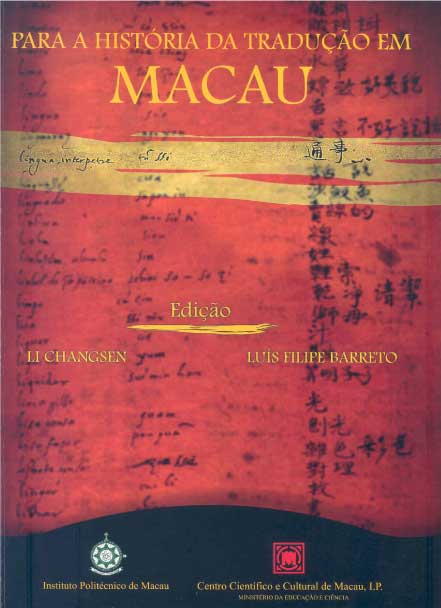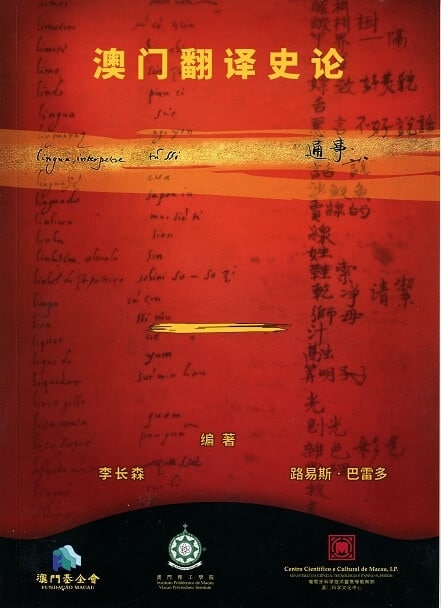Research
The Centre is a research center in the area of social and human sciences, whose projects have promoted international and intercultural relations between Portugal/Europa and China/East Asia. In recent years, two main projects stand out, one already completed and the other one in progress, centered on the work of two figures who played a prominent role in the context of the relations between Portugal/Europe and China during the Ming and Qing dynasties.
Research Project on Tomás Pereira
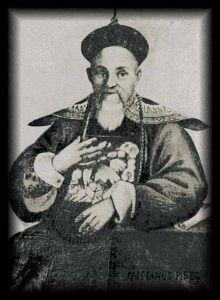
The first of these projects was initiated by the former Portuguese Minister of Science, Professor Mariano Gago, in cooperation with the Portugal-China Center for the History of Sciences in Beijing. This project aimed at studying Tomás Pereira (1646-1708), a Portuguese missionary who, over the 36 years he lived in Beijing (1673-1708), achieved renown as a cultural mediator between Portugal and China, as a consequence of his proximity to the emperor Kangxi (r. 1661-1722). Pereira was professor of European music, translator/interpreter, a political and diplomatic advisor to the emperor, and had a decisive role in the signing of the Treaty of Nerchinsk between China and Russia (1689). At the same time, Pereira was Acting President of the Astronomical Bureau/Qintianjian in Beijing and an expert craftsman, possessing competence in terms of mechanics and European techniques for designing and constructing clocks, musical instruments and automata. The publication of this research by the Centre in 2011 marked the end of the project and contributed to the edition of several hundred manuscript folios, in two volumes, amounting to more than a thousand pages, composed of biographical documents, one hundred and fifty-one letters and a dozen reports and treaties. This project also resulted in the organization of two international colloquia in 2008, one in Lisbon at the Centre, and another in Beijing. The latter was in cooperation with the Center for Mathematics and Fundamental Applications of the University of Lisbon and the Institute of History of Natural Sciences of the Chinese Academy of Sciences. The dissemination of research findings to a wider audience was made possible through training courses given at the Centre, conferences, and the exhibition (and respective catalogue) Tomás Pereira. A Jesuit in Kangxi’s China, that was on display at the Centre, as well as through the publication of articles in national and international books and journals.clocks
Research Project on Álvaro Semedo
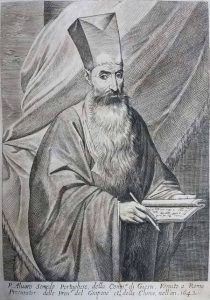
A few years after the completion of this project, another research project was initiated on one of the nuclear figures within the field of the relations between Portugal and Ming China, namely Álvaro Semedo (1585-1658), a Portuguese missionary who, like Pereira, had a long experience in China (between 1613 and 1658, with interruptions) and an in-depth knowledge of Chinese language and China’s culture. Among Semedo’s extensive documental corpus, the book he published in 1642, in the Spanish language, Imperio de la China i Cultura Evangélica en él, quickly became a bestseller in 17th century Europe, with six editions being published in four different languages (besides Spanish, also in, Italian, French and English). With the completion of this project, the first critical edition of the aforementioned Imperio de la China is expected, as well as the publication of the remaining textual production by Semedo, consisting of some forty letters and reports, in addition to a booklet, identified in various libraries and archives in Portugal, Spain, France, Italy and Belgium. A comprehensive monograph on Semedo and his work is also foreseen, dealing with issues such as the author’s contribution to the long process of constituting and circulating knowledge in Europe about the Chinese empire.
Research about Chinese Language, Writing and Translation and Interpretation
In addition to these two projects, the dimension of the Chinese language/writing and the translation/interpretation constitutes a parallel line of research also explored by the Centre, given its determining weight in the relationship between Portugal and China, as well as its interconnection with the mentioned projects. Thus, aspects such as the learning of the Chinese language by Europeans (Mandarim or Guanhua) have been contemplated and the simultaneous creation of linguistic instruments for their study (from vocabularies/dictionaries to programs and manuals) and setting up teams of Chinese interpreters, which the Jesuits started in Macau from the end of the 16th century. In this context, the cooperation between the Centre and the Polytechnic Institute of Macau, allowed a colloquium to be held in Macau in 2011. This resulted in a book, published in 2013 in Portuguese, and in 2016 in Chinese. This theme has been repreatedly adressed in other meetings of a scientific nature, but also in the courses offered at the Centre. A thematic area such as the relationship between Portugal and China presupposes the crossing of Portuguese and other European sources with Chinese ones, but also other Asian ones, such as Japanese, Korean, Malaysian or Vietnamese. Therefore, cooperation with Asia is a fundamental aspect for deepening knowledge and a key element in past, current and future research projects.
